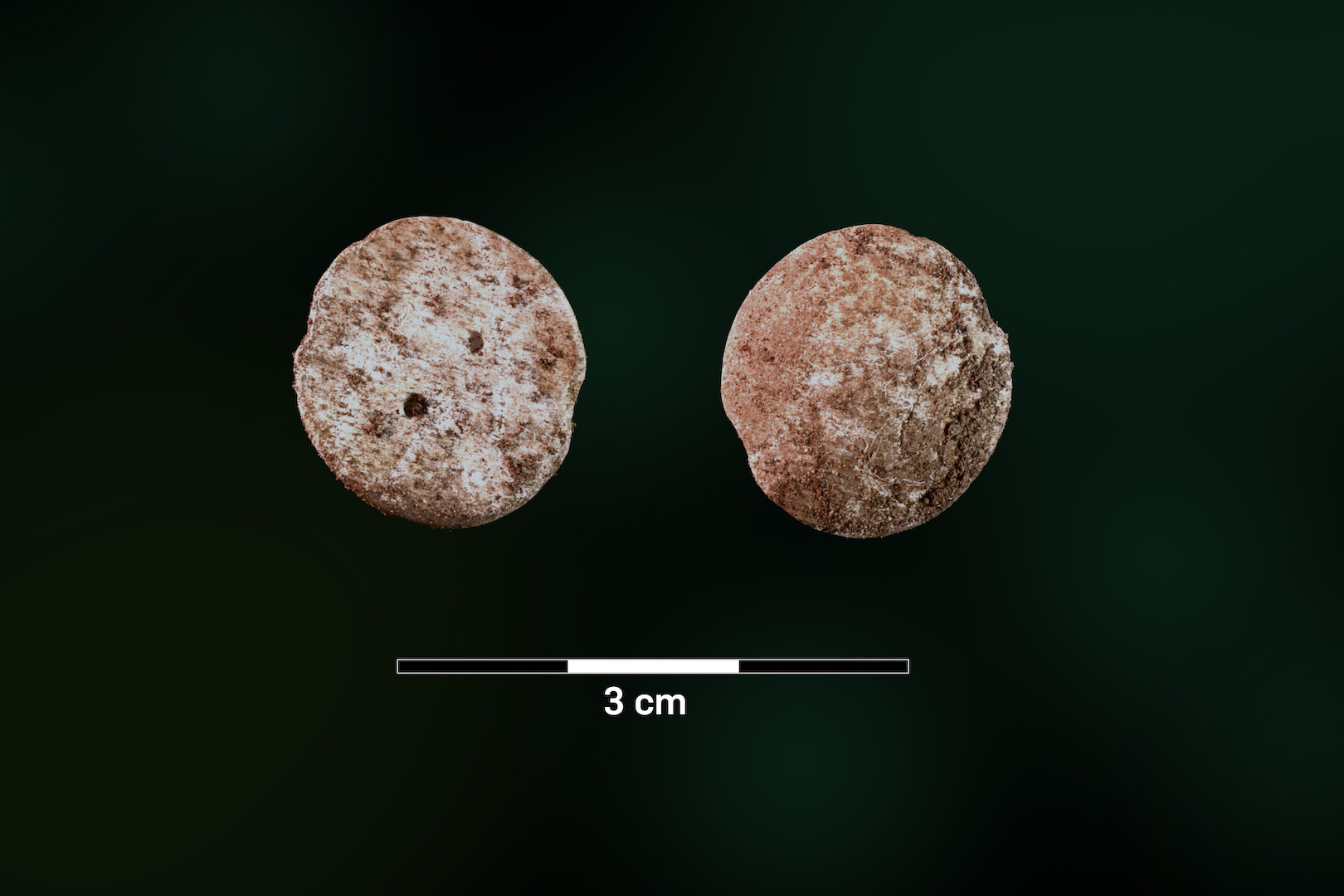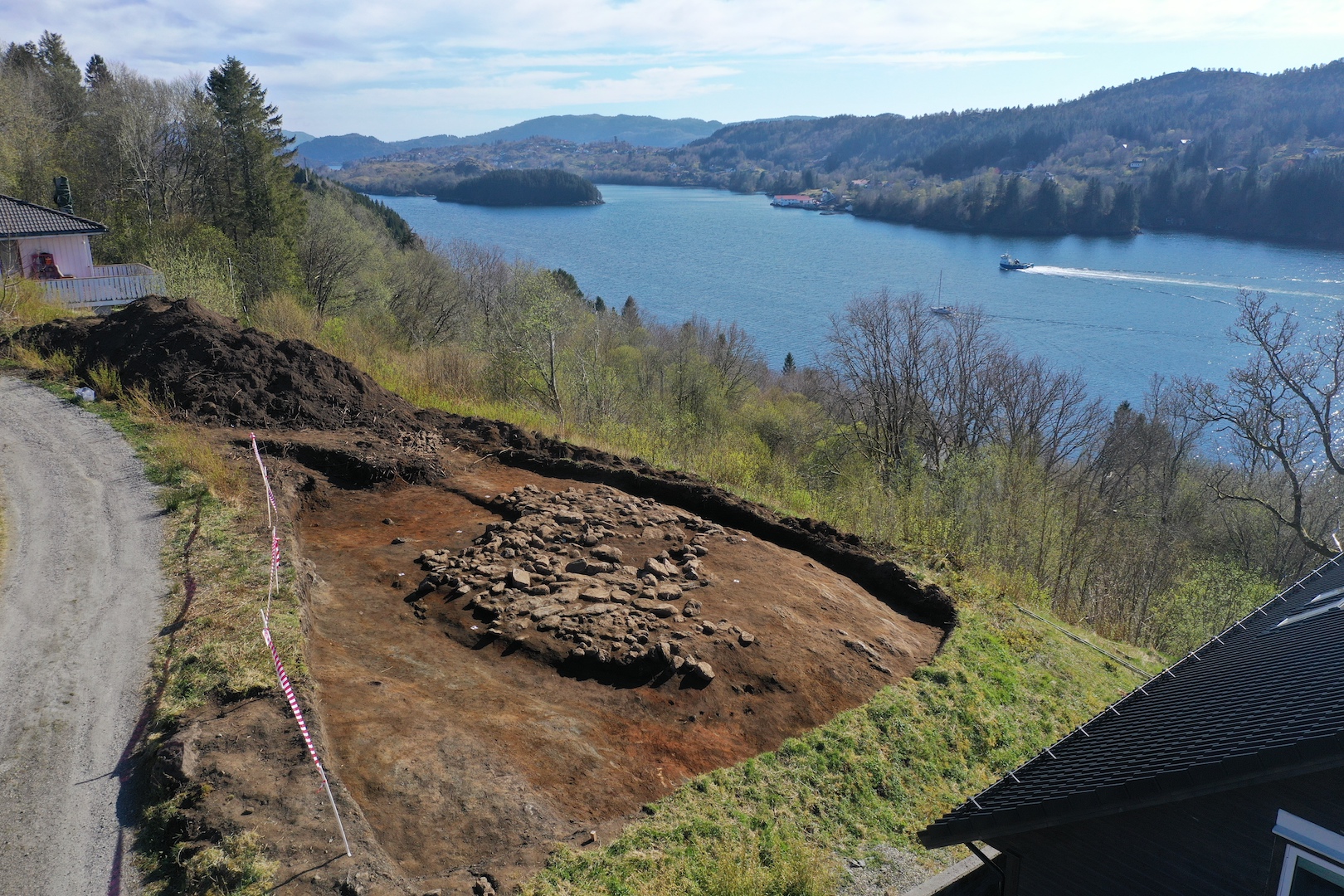Ancient Roman dice unearthed in cremation pit in Norway
Ancient board games were a "symbol of position in society"

On a cliff overlooking a narrow strait in western Norway, archaeologists have discovered rare game pieces, including odd-looking, elongated dice inside a burial mound dating to the Roman Iron Age, between A.D. 1 and A.D. 400.
The game pieces, with bulls-eye-like markings that stood for various numbers and 18 circular pieces, may have been made from rare material such as antlers.
The pieces were likely used in a board game inspired by the Roman game Ludus latrunculorum, precursor to the famous Viking board game Hnefatafl, which was played hundreds of years later, according to a statement from the University Museum of Bergen. These board games were a "symbol of position in society," and "showed the basic capabilities of thinking intelligently and strategically," said Morten Ramstad, a researcher with the University Museum of Bergen, who led the excavations.
Related: 16 of the most interesting ancient board and dice games
Board games in ancient Scandinavia were played only by the elite, and so these gaming pieces — and the burial in which they were found — likely belonged to a powerful person, Ramstad said. But the discovery of this grave cairn (a pile of stones serving as a burial mound) wasn't much of a surprise.

The mountainous lands of Ytre Fosse surround a narrow strait called Alverstraumen, which used to be an ancient sea route called Nordvegen (from which Norway got its name). These mountains are "dotted with grave monuments," Ramstad said. Placing the graves around this ancient sea route — which was important for communication and trading — was a "political" choice showing "power" and "control," he added.
Surveys of the grounds conducted prior to new house construction revealed the grave cairn and excavations began in April, Ramstad said. The ancient grave is around 26 feet (8 meters) in diameter and 1.6 feet (0.5 meters) tall, the boundaries marked off by stones. In the middle of the burial mound was a smaller circular structure about 3.2 feet (1 m) in diameter that was filled with small pieces of charcoal and white dotted dust.
Sign up for the Live Science daily newsletter now
Get the world’s most fascinating discoveries delivered straight to your inbox.

"We knew that immediately we had the remains of a cremation," Ramstad told Live Science. "We haven't done the analysis yet, but we don't think there are any fragments of the head or pelvis," he said. Though the grave clearly belonged to an elite person, he added, the researchers didn't find many other markers of status such as bronze cauldrons and gold rings.
They did discover burnt glass (glass is also a symbol of the elite), three ceramic pots and a bronze pin. But what really made this grave stand out was the handful of "rare" game pieces they found inside, Ramstad said.Similar dice were discovered at several other sites in Norway and in the Vimose weapon-offering site in Denmark, where the board of the actual game was also discovered, according to the statement.
- In photos: The life and death of ancient 'urbanites'
- Photos: Ancient burial of elite members of nomadic tribe
- In Photos: A gladiator burial pit
Originally published on Live Science.
OFFER: Save 45% on 'How It Works' 'All About Space' and 'All About History'!
For a limited time, you can take out a digital subscription to any of our best-selling science magazines for just $2.38 per month, or 45% off the standard price for the first three months.

Yasemin is a staff writer at Live Science, covering health, neuroscience and biology. Her work has appeared in Scientific American, Science and the San Jose Mercury News. She has a bachelor's degree in biomedical engineering from the University of Connecticut and a graduate certificate in science communication from the University of California, Santa Cruz.










